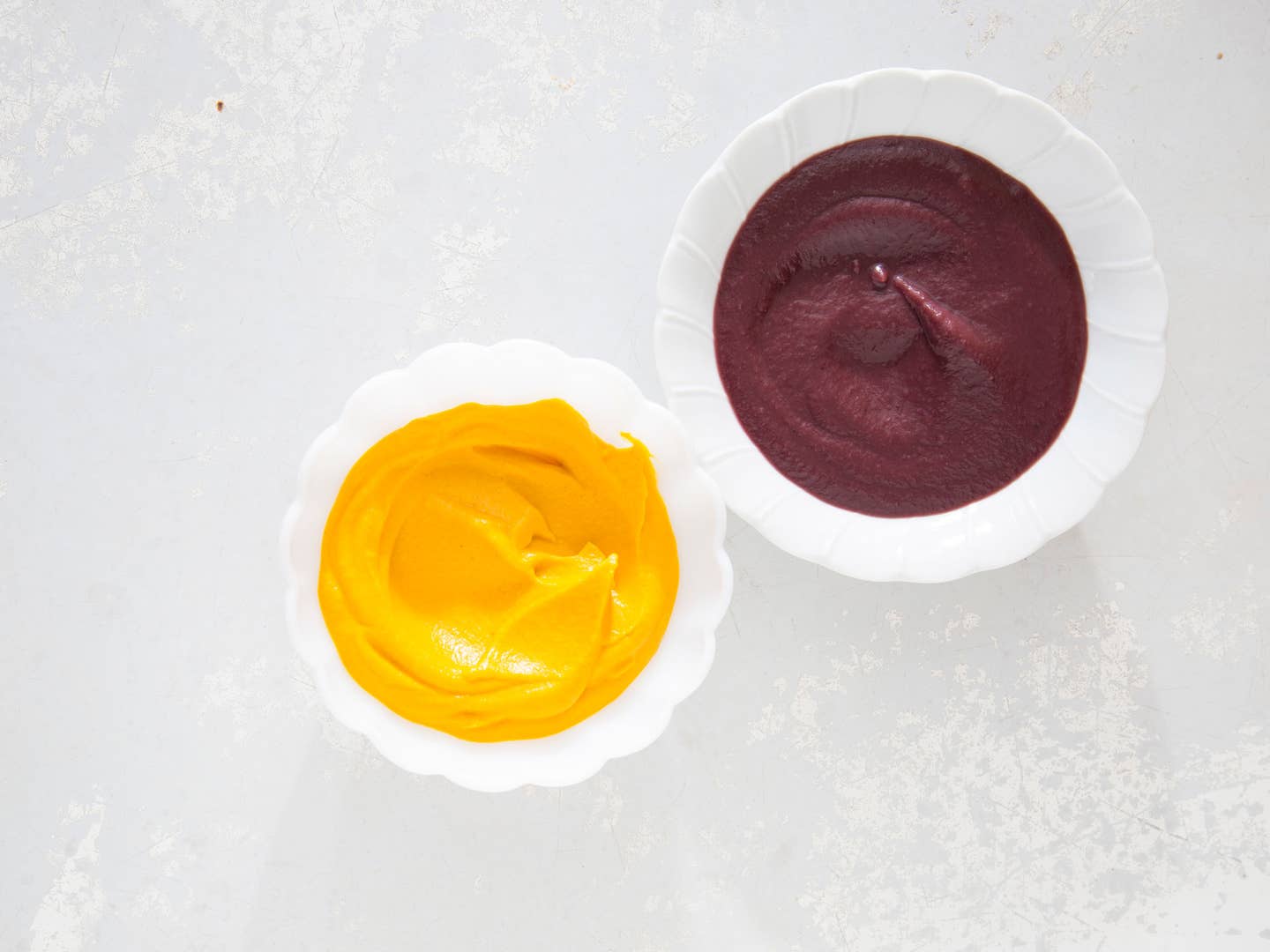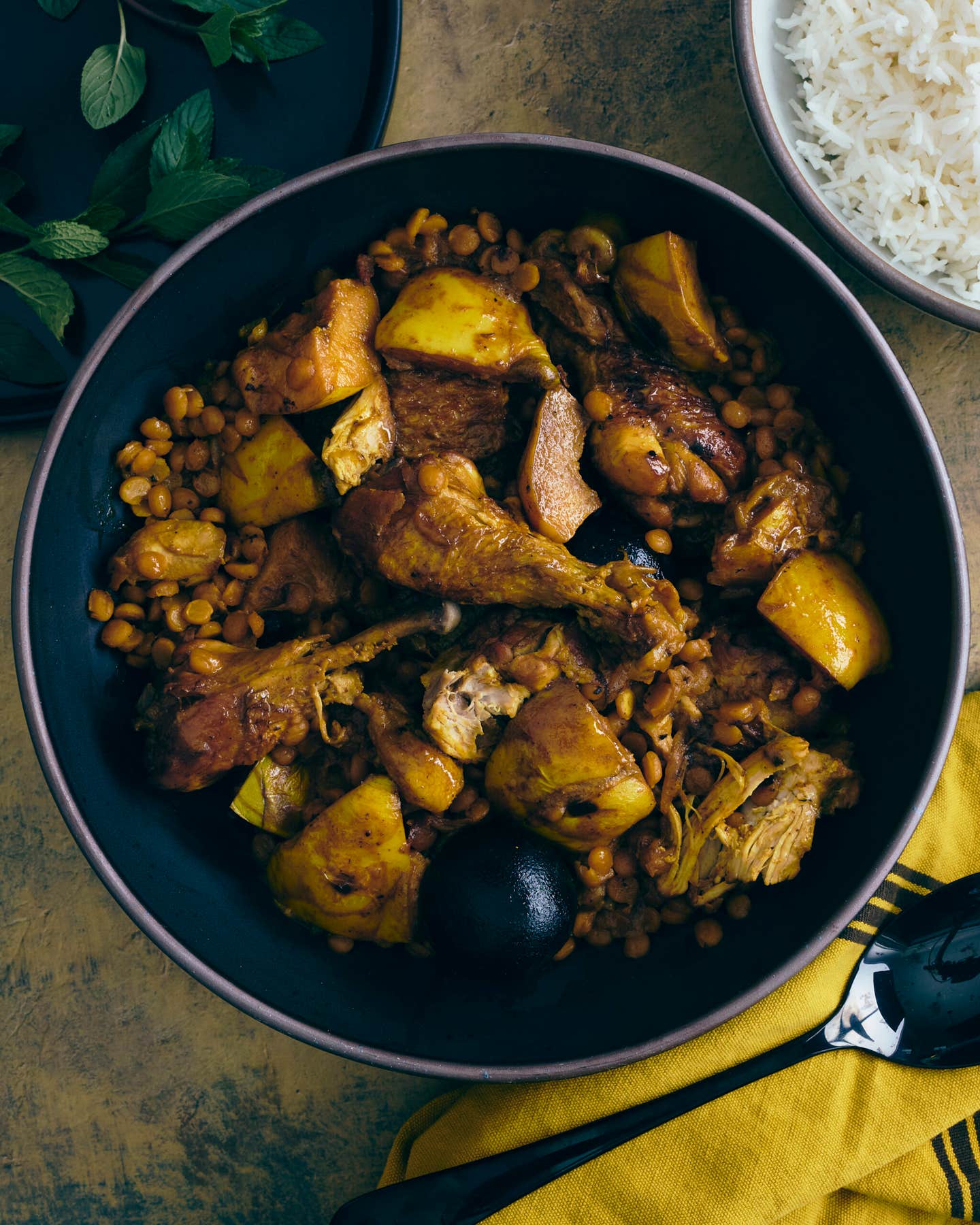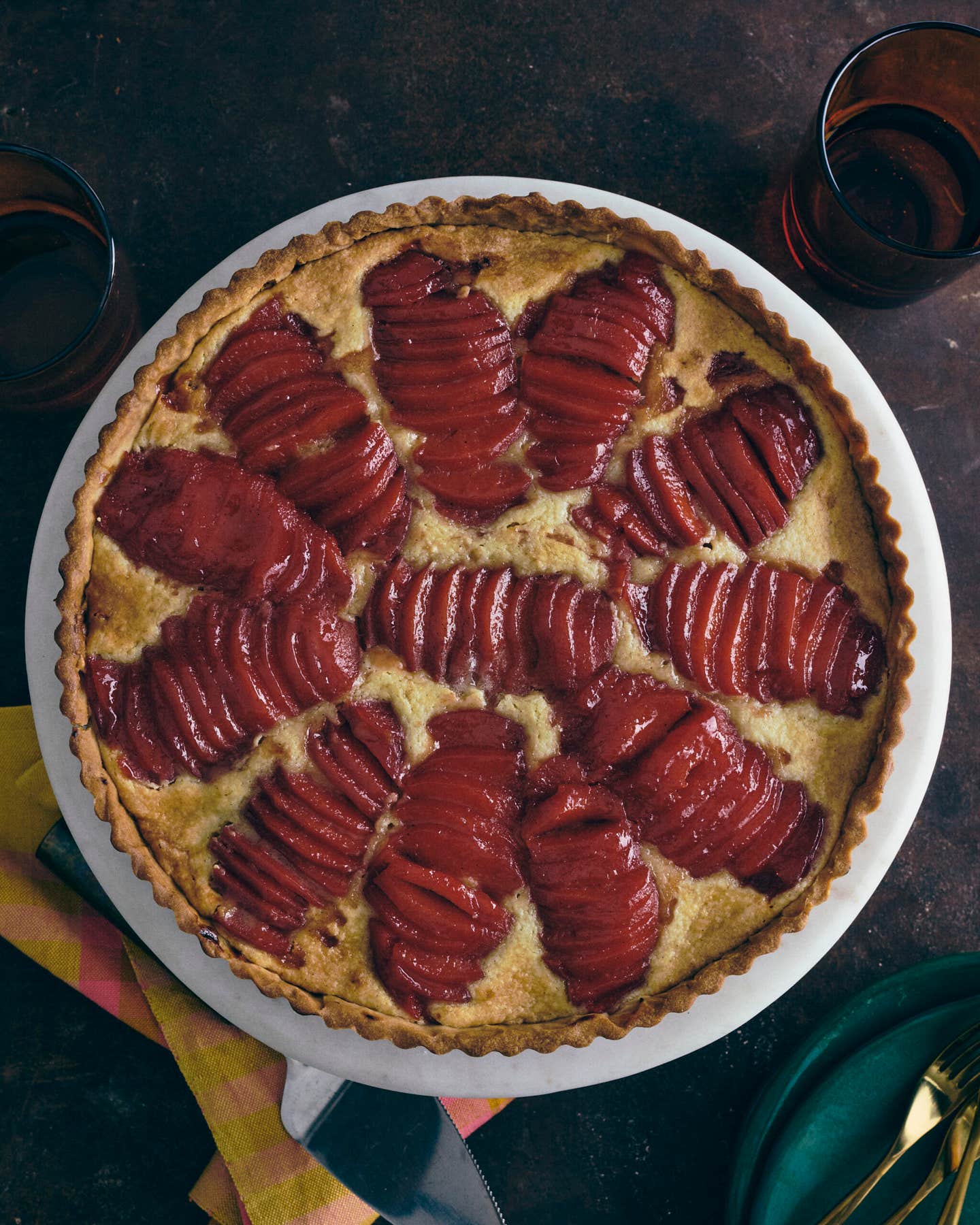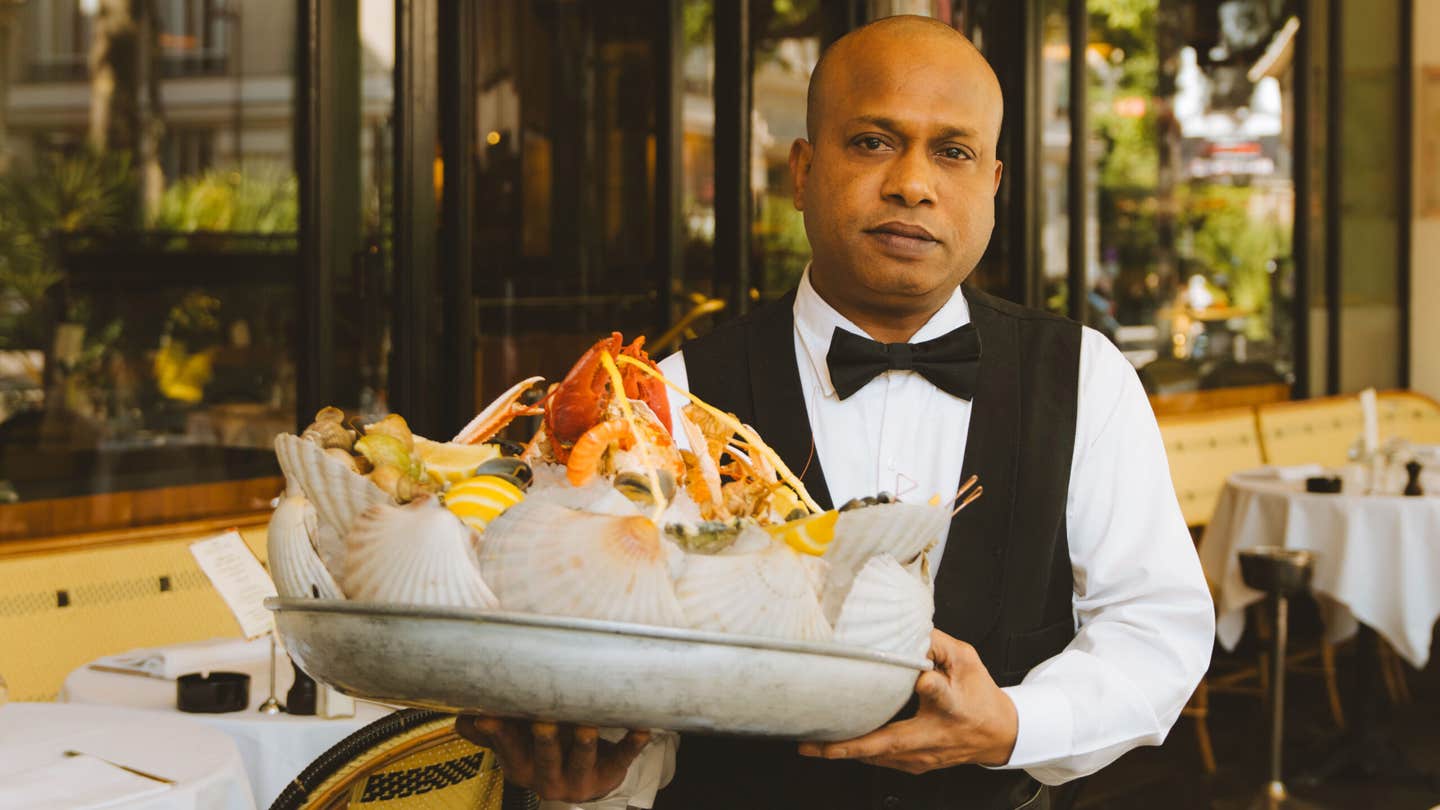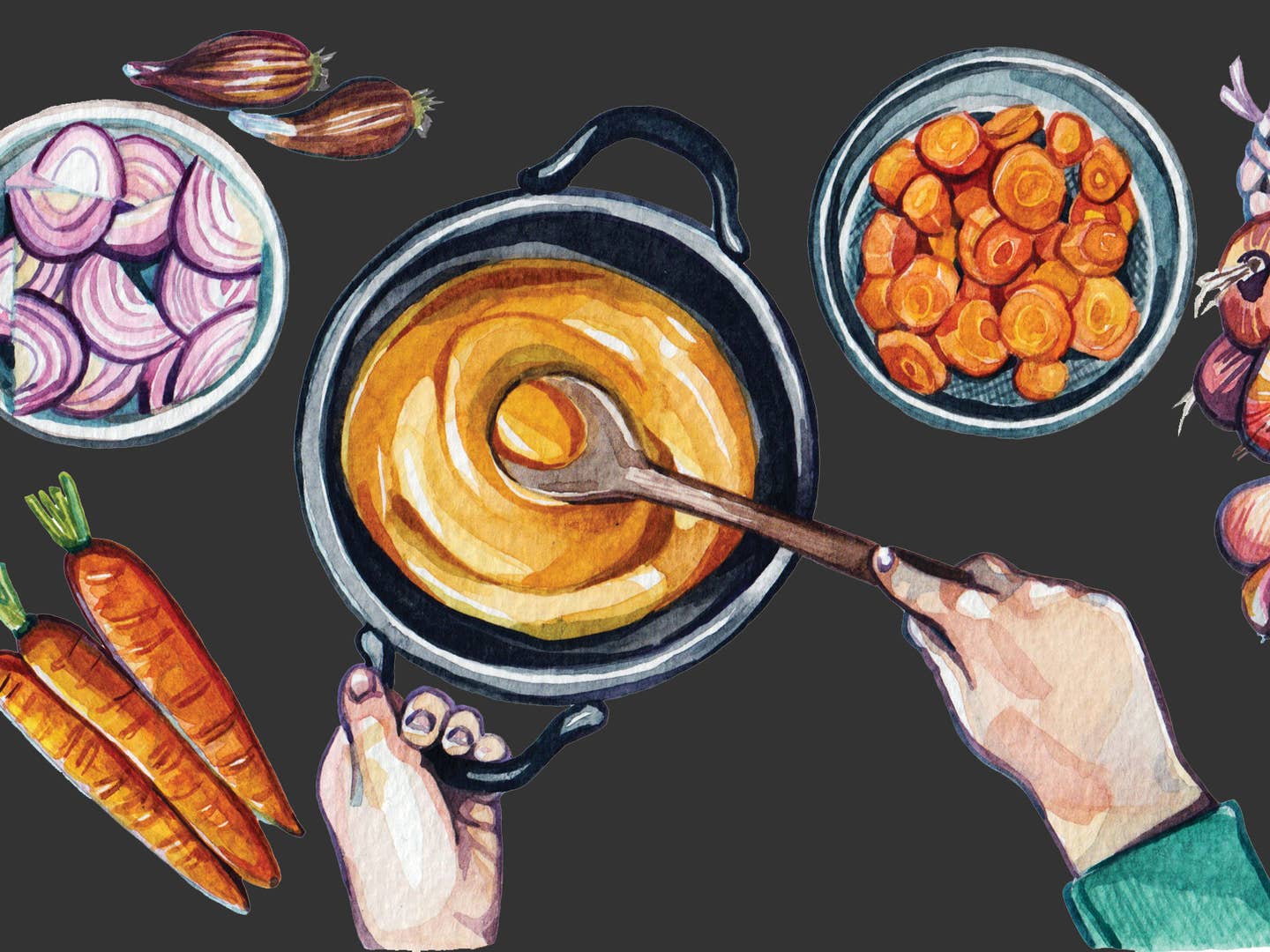

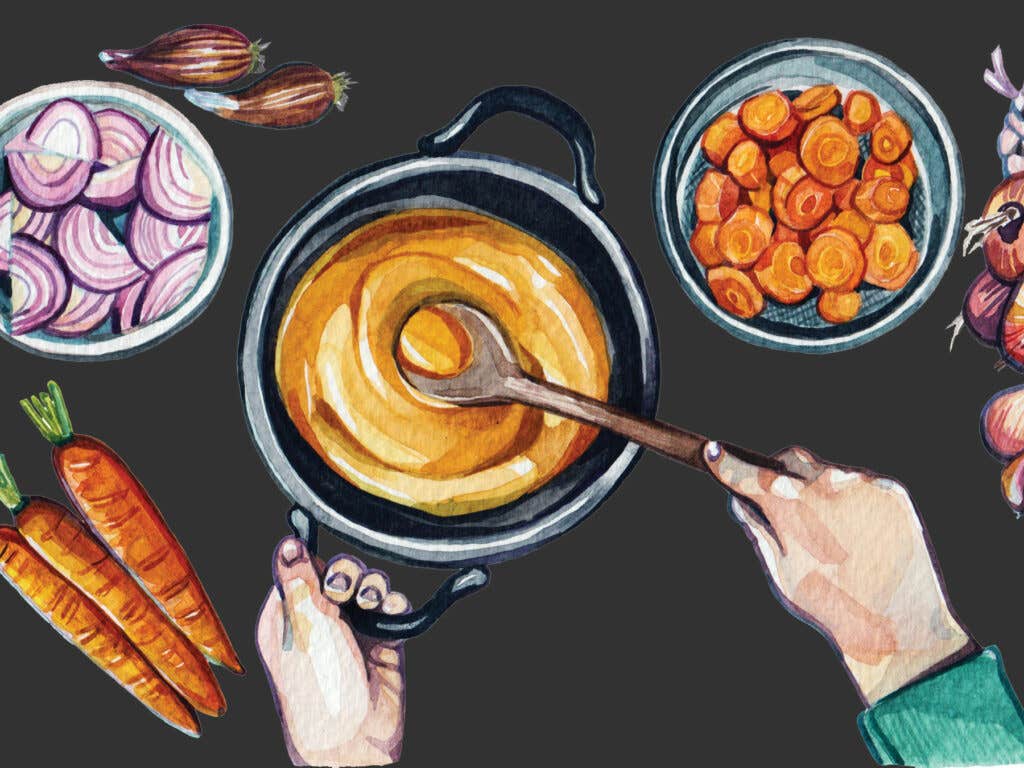
As a student at a classic French culinary school, the clarity of my consommé, the silkiness of my béarnaise, and the uniformity of my brunoise were ruthlessly judged—earning, at best, a curt nod of approval (and, at worst, a ten-minute lecture on respect for la carotte). Then, upon graduation, I found myself working the line at the Michelin-starred Gramercy Tavern in New York City making baby food.
Every day, before the lunch rush, I whipped up a vat each of carrot and onion purée, cooking down military-sized pots of the vegetables until they were soft, blending them, and pushing them through a tamis until they reached the consistency of sleek edible satin. Tasting intensely of their starring ingredients (purée is from the Latin word purus, or pure), these vibrant mushes were divided into quart containers and dropped off at stations to be dolloped into sauces for fish or meat or, in my case, a carrot-barley risotto. They were used as thickeners, to bind, and for added flavor, precisely the way I'd been taught to utilize cream and butter in school, mon dieu.
Cut to me making a favorite pasta sauce one night at home, many years removed from professional restaurant work. I stir in a final dash of cream, as the recipe dictates, and the muscle memory of doing the same thing with onion purée and Gramercy's risotto kicks in. Back then, I'd thought little of the cleverness of the technique—I spent much of my stint on the line panting to catch up to my more proficient colleagues and cleaning errant bits of purée from my hair. But now it occurs to me that it'd be tastier to add a spoonful of onion or garlic purée into my pasta sauce instead of simply a thick glug of fatty cream. Why wasn't that standard culinary practice?
I check in with Escoffier and Larousse, my go-to classic French reference books, to see if they use vegetable purées to thicken or bind while adding flavor. Rien. I do some poking into the Italian section of the saveur library. Niente. The only vegetable purées I turn up are in the form of soups, or side dishes meant to accompany meats, like mashed potatoes.
And so I go back to the source himself, my old boss and culinary mentor.
“It's a little like when you make dashi for the first time,” says Michael Anthony, Gramercy's executive chef, as we sip espressos in the airy dining room of his newest restaurant, Untitled at the Whitney. “You do all this work and then taste it and it's like, ‘That's it? Why'd I go to the trouble?’ But, that dashi, those purées, they're our building blocks.”
The purées he employs at his restaurants—garlic simmered in milk, celery root with apple, spinach—can change with the season and appear in varying ways, including, of course, the cheffy practice of a swoop underneath a protein. But they are also used as thickeners and binders, just as I'd remembered.
“It's not an overcomplicated style of cooking,” he told me. “When you're working with a carrot purée, it should taste like carrots, just carrots.”
In his new cookbook, V is for Vegetables, Anthony recommends folding purée into farro to give it more body and flavor without the added heaviness of butter or cream, and at Untitled, he adds a spoonful of onion purée to a mix of kale and radicchio for a riff on a classic creamed spinach, which accompanies a roasted and fried chicken dish.
"I wish I could take credit for the technique as a stroke of genius," Anthony says. He surmises that the idea of using purées to thicken and flavor came from the 1960s clique of nouvelle cuisine chefs—Paul Bocuse, Alain Chapel, Jean and Pierre Troisgros, and Frédy Girardet, who was famous for his thin, vinaigrette-like purées that pooled on the plate below meats—and then trickled to the States. Before we part, Anthony suggests I get in touch with one of these stateside purée fanatics, New York chef David Bouley.
“So I'll be Captain Kirk and you be Spock,” Bouley says, when I reach him on his cellphone a few days later to talk purée.
Uh, oui, chef.
“We find ourselves in Italy, and there's this beautiful old woman making marinara sauce, and we go over to take a look and there are no tomatoes in sight; she's just cooking down onions in a pot forever, right? And we wait and wait for her to add the tomatoes, and finally, after ages, she throws in a few, no paste, no purée, rices it all, and it's the best marinara we've ever had, and you're asking me, ‘What's that all about?’ Now we get on our starship and zip to Lyon, and there's this other beautiful old lady, and she's cooking her onions down and down, and they get browner and browner and finally she puts in a shot of sherry and some water on top and it's the best onion soup you've ever had in your life, right? So what's going on? These ladies are taking the onions to the point where they're the most flavorful, extracting that flavor, and boom, you have a building block. That's what my purées are.”
While Bouley did, indeed, cook in Girardet's kitchen, he says his motivation to cull down dairy and starches and cant more heavily toward vegetables came when he opened up the French restaurant Montrachet in the 1980s. He wanted to make lighter, healthier food for his clients, and also stock his kitchen with elements that could be combined in countless ways to create myriad final products, so that tasting menus could come together easily and be as varied as the guests who'd be eating them.
To this day he keeps upward of 100 purées at the ready in his walk-in. Of course, he doesn't think home cooks need to have that many on hand, but a few in the freezer, that can be broken off and thrown into a saucepan with pasta or soup? Why on earth wouldn't you stock that, just as you do butter and lemon juice?
And so I dutifully go home and roast shallots with wine and port in the oven, low and slow for a couple hours, to make one of his favorite purée combinations. As the shallots collapse in the oven, and the wine-port mixture reduces, I find myself inhaling the air, openmouthed. When the time comes, I push everything through a tamis and throw the burgundy mush into the fridge, where it sits. And sits. Maybe I forget about it.
And then, one night, with friends in town, I am over the stove stirring that same simple pasta sauce and decide to add in a few spoonfuls of that red wine—shallot purée instead of cream. And just like that, I layer on a deeply complex, extremely satisfying note, sweet with the softened shallots, rich with the wine, that makes it taste like I'd simmered that sauce for half a day, instead of just an hour. A few nights later, I throw some into a jarred (gasp) sauce. Same amazing transformation. And then into a quick kale sauté. Everything it hits, it improves.
“They're like pigments,” Bouley told me. “You paint your own design, sure, but you have to have quality pigments. And the better the pigment, the better the result of your work.”
Keep Reading
Continue to Next Story
